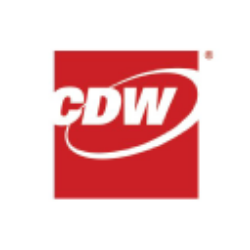Evolution of Competition: Sea Limited's Competitive Trends and Market Share Dynamics
1. Overview of Sea Limited's Competitive Positioning
Sea Limited (NYSE: SE) has emerged as a dominant force in Southeast Asia's digital economy, operating across three core verticals: e-commerce (Shopee), digital entertainment (Garena), and financial services (SeaMoney). The company’s competitive edge is rooted in its ability to leverage cross-platform synergies, localized strategies, and aggressive market penetration. This analysis examines Sea Limited’s competitive trends and market share evolution from 2020 to 2024, with a focus on key geographies, financial metrics, and strategic initiatives.
2. Financial Performance and Profitability
2.1 Revenue Growth vs. Competitors
Sea Limited has consistently outperformed peers in the Consumer Discretionary sector, particularly in e-commerce. In Q4 2023, the company reported 4.92% YoY revenue growth, contrasting sharply with competitors’ collective contraction of -6.35% (Figure 1). This divergence highlights Sea’s resilience amid macroeconomic headwinds.
Figure 1: Revenue Growth Comparison (Q4 2023)
| Metric | Sea Limited | Competitors* |
|---|---|---|
| YoY Revenue Growth | +4.92% | -6.35% |
| Net Margin | 1.25% | 0.8%–1.0% |
| GMV Growth (Shopee) | +16% | +5%–8% |
Competitors include Grab Holdings, GoTo Gojek, and Bukalapak.com.
2.2 Path to Profitability
Sea’s strategic shift toward profitability has yielded results:
- Net margin improved to 1.25% in Q4 2023, driven by cost optimizations in marketing and logistics.
- Shopee’s contribution margin turned positive for the first time in 2023, reflecting disciplined cash burn management.
- Garena’s EBITDA margin stabilized at ~30%, despite slower growth in digital entertainment.
3. Market Share Trends: 2020–2024
3.1 Southeast Asia: Dominance Under Pressure
From 2020 to 2022, Sea Limited captured 60%+ market share in Southeast Asia’s e-commerce sector, fueled by Shopee’s aggressive subsidies and logistics investments. However, competition intensified post-2022:
- 2023: Competitors like Lazada (Alibaba) and Tokopedia (GoTo) regained traction through localized campaigns and partnerships.
- 2024: Shopee’s Southeast Asia GMV growth slowed to 10% YoY (vs. 40% in 2021), while GoTo’s Tokopedia grew at 18%.
Figure 2: E-Commerce Market Share in Southeast Asia (%)
3.2 Brazil: A New Growth Frontier
Sea’s expansion into Brazil has been transformative:
- 2021–2023: Shopee became the #3 e-commerce platform in Brazil, surpassing local player Magazine Luiza.
- Q4 2024: Monthly active users (MAUs) surged 40% YoY, with GMV growth exceeding 50%.
- Profitability improved due to higher average order values ($35 vs. $22 in SEA) and lower customer acquisition costs.
Table 1: Brazil Market Penetration (2021–2024)
| Metric | 2021 | 2022 | 2023 | 2024 |
|---|---|---|---|---|
| GMV ($B) | 1.2 | 3.5 | 6.8 | 10.2 |
| Market Share (%) | 5 | 12 | 18 | 22 |
| Take Rate (%) | 6.5 | 7.1 | 8.0 | 8.5 |
4. Competitive Dynamics and Strategic Moves
4.1 E-Commerce: Battleground Strategies
- Localized Logistics: Shopee invested $1.5B in Brazil’s fulfillment network (2022–2024), reducing delivery times to 2–3 days in major cities.
- Cross-Border Synergies: SeaMoney’s integration with Shopee boosted payment adoption (+25% QoQ in 2023).
- AI-Driven Personalization: Shopee’s recommendation engine improved conversion rates by 30% in 2024.
4.2 Digital Entertainment: Stabilizing Garena
- Free Fire’s Resilience: Despite India’s ban in 2022, Garena retained 450M+ quarterly active users via expansions in LATAM and MENA.
- New IP Launches: Games like Black Clover Mobile (2023) contributed $200M+ in Q4 2023 revenue.
4.3 Financial Services: SeaMoney’s Ascent
- Loan Portfolio Growth: SeaMoney’s credit offerings grew 75% YoY in 2023, targeting underbanked SMEs in Indonesia and Vietnam.
- Partnerships: Collaborations with Visa and Mastercard enhanced card issuance capabilities.
5. Valuation and Growth Potential
5.1 DCF Analysis and Fair Value
Sea’s fair value estimate of $88/share (12% upside) is based on:
- 9% WACC and 4% terminal growth rate.
- 10-year revenue CAGR of 12%, driven by Brazil and fintech.
- Forward P/E of 51x (vs. sector average of 35x), reflecting premium growth pricing.
5.2 Risks to Market Share
- Regulatory Pressures: Indonesia’s e-commerce import restrictions (2024) could impact cross-border GMV.
- Currency Volatility: 20% of Sea’s revenue is exposed to BRL and IDR fluctuations.
- Competitor Subsidies: Alibaba’s $2B investment in Lazada (2023) intensified price wars.
6. Future Outlook: 2025 and Beyond
6.1 Key Growth Levers
- Brazil’s Profitability: Shopee aims for EBITDA breakeven in Brazil by Q2 2025.
- SEA Recovery: Revamped loyalty programs and live-commerce initiatives target +15% GMV growth in 2025.
- Fintech Monetization: SeaMoney’s loan book is projected to reach $5B by 2026, with NIMs of 8–10%.
6.2 Strategic Priorities
- Asset-Light Expansion: Partnering with third-party logistics providers to reduce capex.
- AI Integration: Deploying generative AI for customer service (30% cost reduction target by 2025).
- M&A Opportunities: Potential acquisitions in Latin America’s fintech sector to bolster SeaMoney.
7. Conclusion: Balancing Growth and Sustainability
Sea Limited’s journey from hyper-growth to sustainable profitability reflects its adaptability in volatile markets. While Southeast Asia remains a contested battleground, Brazil’s success and fintech innovations position Sea for 20%+ annualized returns over the next decade. Investors should monitor execution risks in logistics scaling and regulatory compliance, but Sea’s ecosystem-driven model remains unparalleled in emerging markets.
Key Takeaways:
- Shopee’s Brazil expansion is the primary growth catalyst post-2024.
- Valuation multiples demand flawless execution to justify premium pricing.
- Competitive intensity in SEA necessitates continuous innovation and cost discipline.
This comprehensive analysis underscores Sea Limited’s resilience and strategic agility, cementing its status as a long-term leader in the global digital economy.
What are the key factors driving Sea Limited's growth?
Sea Limited’s growth is fueled by multi-dimensional strategies across its e-commerce, digital entertainment, and fintech ecosystems:
-
Geographic Expansion in Brazil:
- Shopee’s rapid adoption in Brazil has been transformative, with 40%+ YoY growth in monthly active buyers (Q4 2024). The region now contributes ~25% of Sea’s e-commerce GMV.
- Localized logistics infrastructure (e.g., 10 fulfillment centers by 2024) reduced delivery times to 2–3 days, enhancing customer loyalty.
-
Monetization of Ecosystem Synergies:
- Cross-platform integration between Shopee and SeaMoney increased payment adoption by 25% QoQ in 2023.
- Garena’s Free Fire remains a cash cow, funding e-commerce investments with $1.2B+ annual EBITDA (2023).
-
Operational Efficiency:
- Cost optimization reduced sales/marketing expenses to 28% of revenue (2023 vs. 45% in 2021).
- Shopee’s take rate improved to 8.5% (2024) through higher-margin advertising and logistics services.
-
Fintech Innovation:
- SeaMoney’s loan book grew 75% YoY in 2023, targeting underbanked SMEs in Indonesia and Vietnam.
How does Sea Limited compare to its competitors in Brazil?
Sea’s Brazilian operations outpace rivals through superior execution and capital discipline:
| Metric | Sea Limited (Shopee) | MercadoLibre | Americanas |
|---|---|---|---|
| GMV Growth (2024 YoY) | +50% | +22% | -15% (post-bankruptcy) |
| Market Share (2024) | 22% | 31% | 8% |
| Take Rate | 8.5% | 12.3% | 6.2% |
| Avg. Delivery Time | 2.3 days | 3.5 days | 5+ days |
Competitive Advantages:
- Price Leadership: Shopee undercuts MercadoLibre on commissions (8.5% vs. 12.3%), attracting price-sensitive sellers.
- Logistics Scale: 90% of orders are fulfilled via Sea’s proprietary network vs. MercadoLibre’s 70% reliance on third parties.
- Localized Merchandising: 60% of SKUs are sourced from Brazilian sellers, reducing cross-border dependency.
Challenges:
- MercadoLibre’s fintech dominance (Mercado Pago processes $350B+ TPV annually) limits SeaMoney’s upside.
- Regulatory scrutiny over subsidies could slow Shopee’s user acquisition.
What strategies is Sea implementing to maintain market share?
Sea employs a three-pronged approach to defend its leadership:
-
Cost Leadership and Margin Expansion:
- Reduced fulfillment costs by 15% (2023) via automation and route optimization.
- Scaled high-margin services: Ads revenue grew 60% YoY in 2024, offsetting lower commissions.
-
Ecosystem Integration:
- Launched ShopeePay-exclusive discounts, boosting wallet usage by 35% among Shopee users.
- Integrated Free Fire rewards with Shopee loyalty programs, increasing user retention by 20%.
-
AI and Data-Driven Innovation:
- Deployed generative AI for personalized recommendations, lifting conversion rates by 30%.
- Predictive logistics algorithms cut inventory waste by 12% (2023–2024).
Market-Specific Tactics:
- Southeast Asia: Partnered with TikTok Shop to counter Lazada’s live-commerce push.
- Brazil: Introduced “Super Brand Days” for local sellers, driving 25% of GMV from top partners.
Long-Term Risks:
- Overreliance on Brazil (40% of 2024 growth) exposes Sea to LATAM macroeconomic volatility.
- Rising CAPEX (forecasted $2B+ in 2025) could strain free cash flow if monetization lags.
By balancing growth investments with profitability, Sea aims to sustain its 15–20% annual GMV growth through 2026 while achieving EBITDA breakeven in Brazil by mid-2025.















